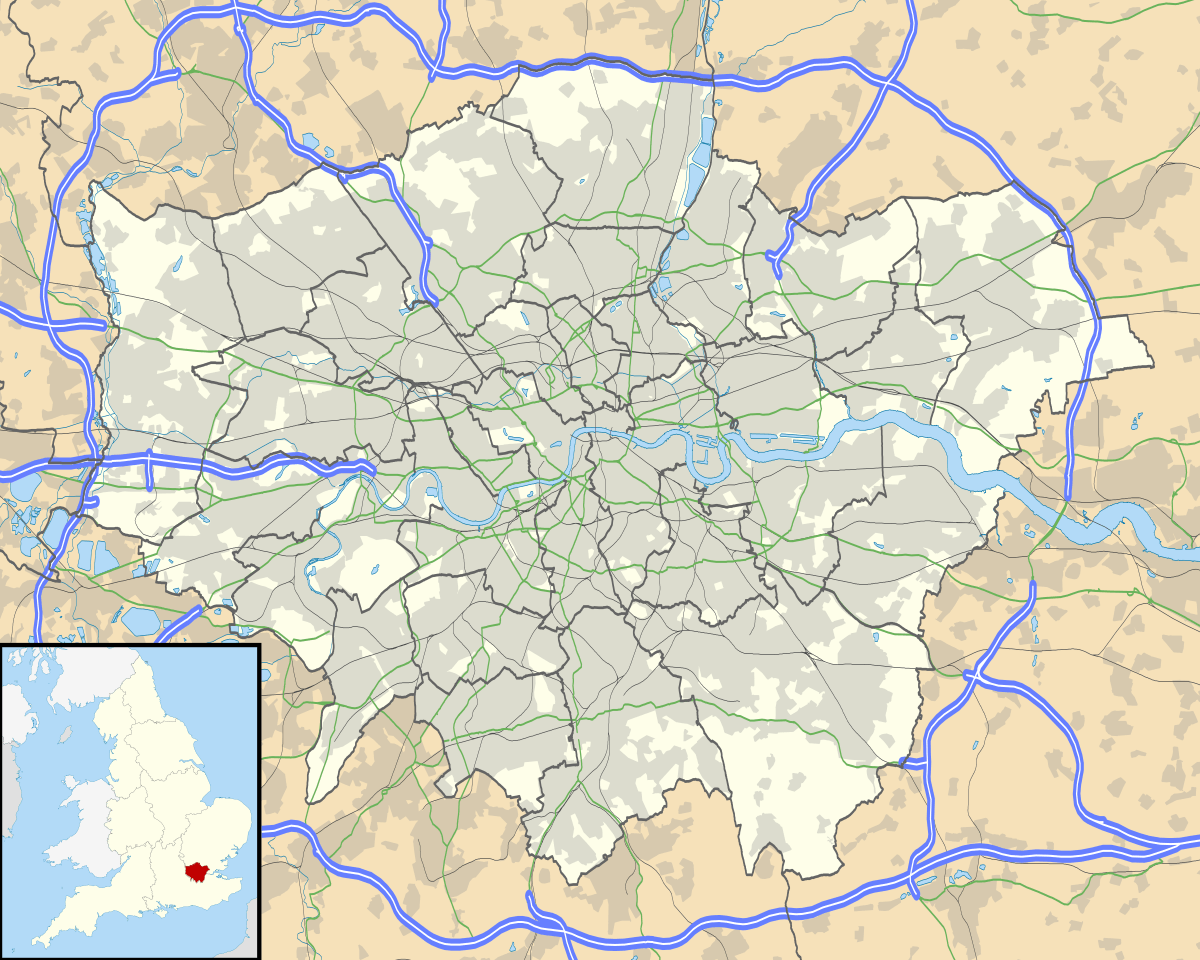Sanderstead railway station
Sanderstead railway station is on the Oxted Line in the London Borough of Croydon, 1 mile (1.6 km) from Sanderstead village. It is in Travelcard Zone 6, 12 miles 23 chains (19.77 km) from London Bridge. The station is managed by Southern.
| Sanderstead | |
|---|---|
Sanderstead Station | |
 Sanderstead Location of Sanderstead in Greater London | |
| Location | Sanderstead |
| Local authority | London Borough of Croydon |
| Managed by | Southern |
| Station code | SNR |
| DfT category | D |
| Number of platforms | 2 |
| Fare zone | 6 |
| National Rail annual entry and exit | |
| 2014–15 | |
| 2015–16 | |
| 2016–17 | |
| 2017–18 | |
| 2018–19 | |
| Key dates | |
| 10 March 1884 | Opened |
| Other information | |
| External links | |
| WGS84 | 51.3484°N 0.094°W |
On the up (London-bound) platform is a ticket office, staffed for most of the day, and a self-service ticket machine is outside the station on the up side: there is no PERTIS (Permit to travel) machine. Purley Oaks, also in Travelcard Zone 6, is nearby.
History
The station was opened on 10 March 1884 by the London, Brighton and South Coast Railway and the South Eastern Railway with their line between South Croydon and East Grinstead. The population was around 300, rising to 534 by 1901.[2] In 1913 the station was set alight. The suffragette Elsie Duval was the main suspect.[3] In the mid-1920s, the Southern Heights Light Railway was proposed, which would have left the Oxted line south east of the station and finished at Orpington.[4] An extensive bookstall was on the up platform, and a signal box on the down platform.
The building was weather-boarded, cheap to construct but requiring regular maintenance. It was destroyed by fire in June 1986 and a new brick building opened in September 1987.[5] The signal box closed on 2 November 1985 and was demolished in August 1987.[6] The line from Selsdon to Sanderstead was electrified on 30 September 1935, and electrification of the South Croydon-Selsdon and Sanderstead-East Grinstead sections of line was approved by BR in the early 1980s: South Croydon-Selsdon was electrified in 1984 using some redundant materials from the closed Woodside-Selsdon line.[7] Electrification to East Grinstead was completed in October 1987.
Electric trains on the Woodside and South Croydon Railway via Selsdon to Elmers End ran from 1935 until the line closed in 1983; at that time, fewer than 150 people were using the service per day, which ran on weekdays at peak hours to Elmers End.[8]
Services
The typical off-peak service in trains per hour is:
- 2 to London Victoria via East Croydon
- 2 to East Grinstead
In peak period trains run to and from London Bridge, calling at South Croydon, the next station north.
Services normally use Class 377 Electrostars, with Class 700 in the peaks.
| Preceding station | Following station | |||
|---|---|---|---|---|
| South Croydon | Southern Oxted Line |
Riddlesdown | ||
| Thameslink Oxted Line Peak hours only |
||||
| Disused railways | ||||
| Selsdon | British Rail Southern Region Woodside and South Croydon Railway |
Terminus | ||
Facilities
The station is staffed until five minutes after the last train.[9] There is a small tea bar at one end of the station which has recently been re-opened during morning peak hours. There is a footbridge between the platforms. The station has been selling second hand books for charity since 2009 and a certificate on display shows how much has been raised. A children's table and chairs have recently been installed.
Connections
London Buses route 403 serves the station.[10]
References
- "Station usage estimates". Rail statistics. Office of Rail Regulation. Please note: Some methodology may vary year on year.
- Mitchell, Vic; Smith, Keith (March 1995). Croydon (Woodside) to East Grinstead (Country Railway Routes). Midhurst, West Sussex: Middleton Press. p. Plate 30. ISBN 1-873793-48-0.
- "chertsey museum". chertseymuseum.org. Retrieved 17 March 2019.
- "Southern Heights Railway". The Times (45098). London. 11 January 1929. col D, p. 9.
- Mitchell, V. and Smith, K., plate 39.
- Mitchell, V. and Smith, K., plate 35.
- Mitchell, V. and Smith, K., plate 55
- Mitchell, V. and Smith, K., plate 38.
- .
- "Buses from Purley Oaks and Sanderstead" (PDF). TfL. January 2015. Retrieved 20 June 2020.
External links
| Wikimedia Commons has media related to Sanderstead railway station. |
- Train times and station information for Sanderstead railway station from National Rail